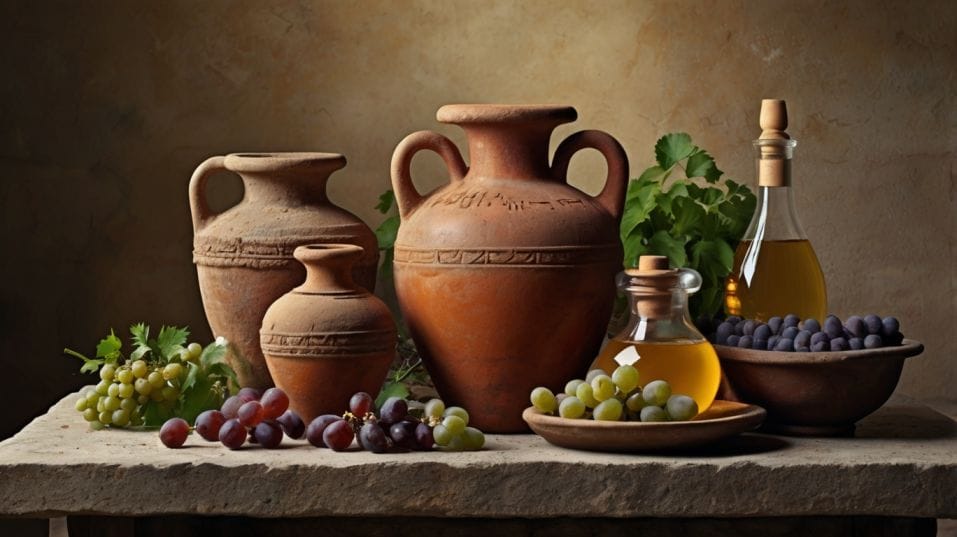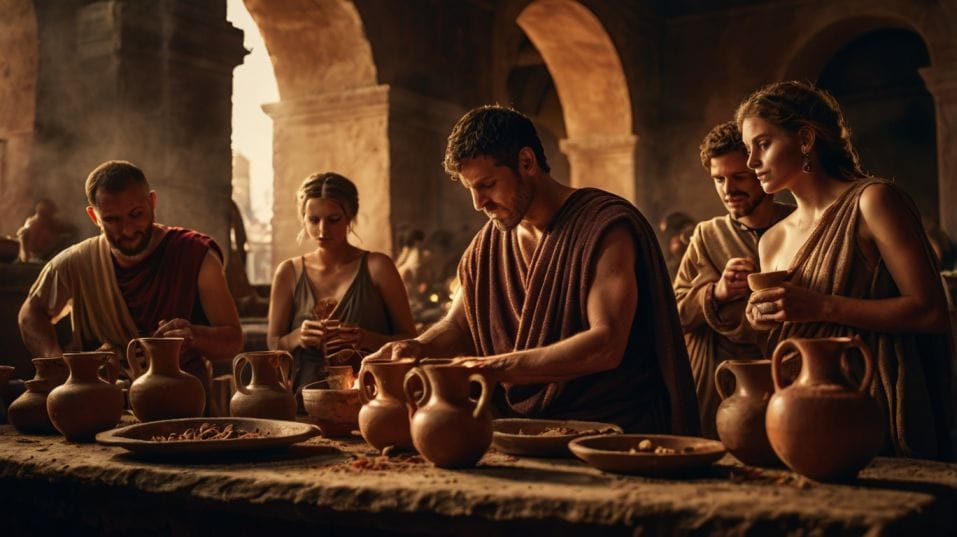Ancient Rome’s Wine Habits Were… Intense
Explore Ancient Rome’s intense wine rituals and discover how their bold, hands-on habits can deepen your modern wine knowledge and tasting skill.

What if your next great wine insight came not from a sommelier, but from a Roman senator—or a foot soldier? Ancient Rome didn’t just drink wine.
They transformed it. From kitchen tables to temples, wine was diluted, spiced, and aged with startling precision.
Their approach was anything but casual, and today’s drinkers can still learn from it. Curious how ancient habits might sharpen your palate? Rome’s wine world just might change how you drink now.
Wine Was Everywhere—But Not All Wine Was Equal
The first thing to understand: in Ancient Rome, everyone drank wine. Slaves, senators, soldiers. But the type of wine—and how it was prepared—varied wildly depending on status, purpose, and context.
Poorer Romans drank something called lora—a rough byproduct made from grape skins, stems, and seeds soaked in water after the initial pressings were long gone.
It was thin, acidic, and heavily diluted. For soldiers and laborers, it was hydrating and mildly antiseptic more than enjoyable.
Meanwhile, the wealthy drank wines aged for decades, often grown on specific volcanic hillsides and stored in sealed amphorae in cool subterranean vaults.
The elite preferred oxidized wines that had darkened with time, thickened with evaporation, and taken on flavors from the clay or resin that sealed them.
For modern drinkers, the lesson is this: wine is not about prestige—it’s about purpose. Just like ancient Romans drank differently depending on season, meal, and status, you don’t need to have a “favorite” wine.
You need to know when, where, and why a certain style works for you. That’s how you choose smarter, not just fancier.

Dilution Was Standard Practice—And Strategic
In modern wine circles, watering down a bottle is a sin. In Rome, it was a rule. Wine was always diluted, and drinking it neat was seen as barbaric.
They cut it with warm water, cold water, or even snow, depending on the occasion. The strength of the mix conveyed cultural cues—morning wine was weak, evening wine stronger. Festival wine? That might lean wild and potent.
But this wasn’t just custom—it was technique. Romans believed that dilution helped coax out flavor, extend the wine’s life, and temper aggressive tannins or spoilage.
Sometimes, seawater was added for preservation, or for a briny complexity. If you’ve ever chilled a red to bring down its alcohol, or let a bold bottle open up over hours, you’re in the same spirit.
Tuning a wine’s structure to fit your palate—or your environment—isn’t cheating. It’s mastery.
Wine Was Spiced, Smoked, and Manipulated
Romans didn’t stop at dilution. They infused wines with herbs, tree resins, spices, honey, and even crushed flower petals or charcoal. Some of this was about taste.
Much of it was about preservation or status. A spiced or perfumed wine, like the famous conditum paradoxum, showed wealth, knowledge, and access to trade.
Boiling grape must to concentrate sugars created intense, syrupy wines. Smoking amphorae added flavor and helped prevent spoilage.
Even the shape and material of a vessel—clay vs. bronze, narrow vs. wide—could affect oxidation rates and aroma.
You don’t need to dose your wine with myrrh to take something away here. Instead, notice what else is happening in your glass.
Where are the herbal notes coming from? Is that smoke from oak, or is it the grape variety itself? Start thinking of wine as a layered creation—not a static product.
Amphorae and Aging: The Original Terroir Tech
Long before stainless steel or French oak, the Romans used terracotta amphorae to ferment and store their wine.
These porous clay vessels allowed slow oxygen exchange and subtly influenced the wine’s structure. Often sealed with pine resin or beeswax, they created both preservation and flavor.
Over time, winemakers began to see patterns—certain amphorae from certain regions gave better results. Certain soils produced wines that aged longer or traveled better.
This is where the earliest notions of terroir—soil, place, and climate shaping the final product—started to take hold.
Modern natural winemakers often return to these ancient methods. Amphora-aged wines today can offer surprising texture, earthiness, or lift that’s hard to replicate with modern tools.
If you’re looking to deepen your understanding of structure, try one. Clay vessels can teach your palate to recognize minerality, grip, and balance in a whole new way.
Sweetness and Oxidation Were High Art
Romans had a strong preference for sweet, strong, oxidized wine.
Their most prized bottles—like Falernian or Surrentine—could age for decades, developing nutty, roasted, or dried-fruit flavors that modern drinkers might associate with Madeira or tawny Port.
They understood that wine changed with time, that oxidation could add character, and that sweetness wasn’t just sugar—it was a frame for other complexities.
In some cases, they intentionally exposed wines to sun and heat to accelerate those changes. You may not crave a sweet wine now.
But as your palate matures, understanding residual sugar, oxidative notes, and long aging can help you recognize balance more confidently.
Great wine doesn’t always scream fruit and freshness. Sometimes it hums with age, depth, and quiet concentration.
What Romans Can Teach You About Tasting Today
The Romans had no lab tests, no bottling lines, no glossy tasting rooms. What they had was a visceral, hands-on, trial-and-error relationship with wine.
They tasted constantly. They blended fearlessly. They weren’t afraid to boil, spike, stretch, or age something into a different shape entirely.
They didn’t ask “is this good?” They asked: What’s it doing? What’s it for? And how can I make it better?
Apply that mindset to your own wine life. Don’t rush through a glass. Linger. Try comparing two similar wines side by side—same grape, different region.
Or the same bottle across two nights. Pay attention to what shifts and why. That’s how you build skill, not just preference.
Final Thoughts
Roman wine habits weren’t refined. They were relentless. And that’s exactly what made them powerful. Wine was part of everything—ritual, medicine, celebration, politics—and it demanded attention.
So ask yourself: are you drinking wine, or just sipping it? Take the Roman approach. Taste intentionally. Experiment with aging, temperature, or pairing. Push your expectations, not just your budget.
Tonight, seek out a wine that’s a little off-script. Try a clay-aged red, a dry sherry, or a sweet white you’d normally overlook.
Add one small ritual to your drinking—slow down, compare, take notes, ask questions. Wine is a moving target.
You’ll only get better at chasing it if you stay curious. Ancient Rome didn’t treat wine as an accessory. Neither should you.




